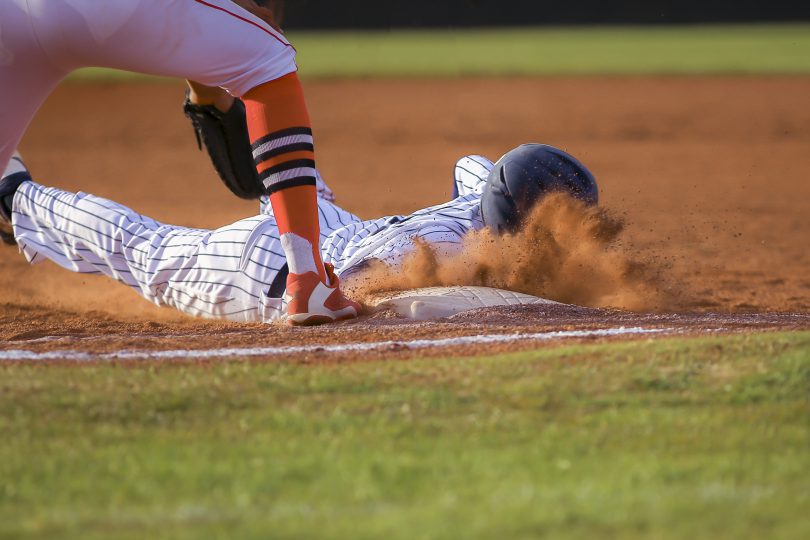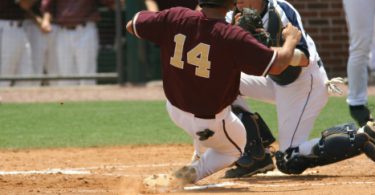The Situation:
There’s a runner on first with two outs in the bottom of the third inning. The offense is down 3-0, and there’s a 0-1 count on the batter. The batter is a back-of-the-order hitter with not much power. The runner at first has good speed and is expecting a breaking pitch. Looking to get the offense going and get into scoring position, he takes a good lead and hopes to steal second.
The Play:
The right handed pitcher comes set. Holds, and fires a quick pick-off attempt over to first. The runner at first is caught with his weight on the wrong foot, but dives back to the base. As he dives back to the base, the first baseman puts the tag down. It’s a typical bang-bang play, with the glove slapping the wrist just as the right hand of the base runner makes contact with the middle of the base.
The Outcome:
The umpire makes a quick decision and punches out the runner at first to end the inning. The call could go either way, but this time the defense is on the winning side. The defense heads back to the dugout as the runner wipes the dirt from his uniform.
What Went Wrong:
Can you figure out where the mistake is? There is nothing inherently wrong with the runner’s intent. With two outs and the batter behind in the count, trying to get into scoring position isn’t a terrible idea, especially with a singles hitter at the plate. Sometimes when you are playing aggressive like the runner, you end up making outs. Most coaches can live with that. But is there anything the runner could have done to be safe? We think so.
You’ll notice if you re-read the description of the tag that the runners hand makes contact in the middle of the base. When a base runner takes his lead, he should always do it from the back corner of the base, rather than the middle or front. When a base runner dives back to the base, he should also always dive for the back corner. Working off of and diving back to the back corner of the bag makes the fielders throw the ball further and reach further for the tag. The difference is very slight, a catcher having to throw the ball 127.5 feet to second, instead of 127. A first baseman having to reach 18 inches instead of 12. In terms of timing, 6 inches may not seem like it would make a big difference, but that extra split second can and often is the difference between being out and safe. In a game of inches, every detail counts. When you are on base, working from the back corner of the bag gives you a little more wiggle room on diving back and stealing bases.
Here’s an MLB video example of how working from the back end of the base can make the difference between out and safe. You’ll notice Alex Gordon’s hand on the very back corner of the base. He’s safe and that is thinking the game!







